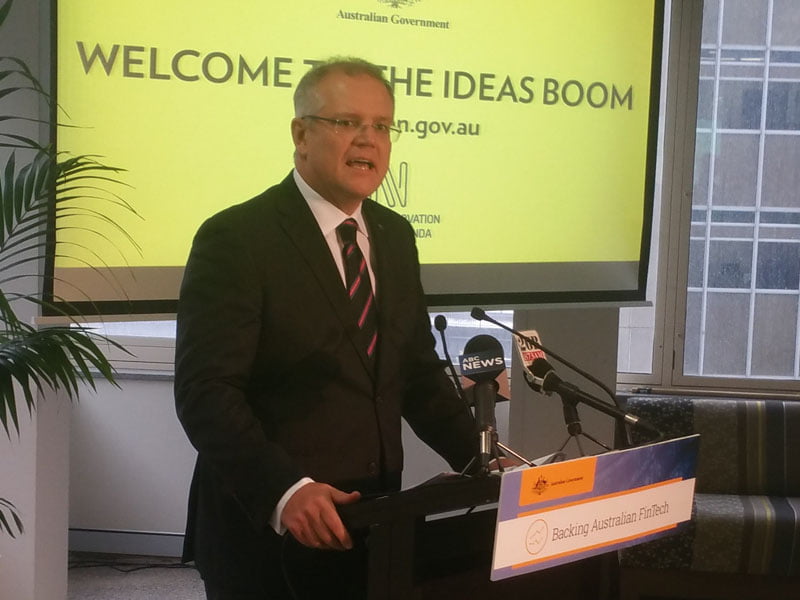Treasurer Scott Morrison has rejected a damning Australian National Audit Office’s (ANAO) evaluation of the Turnbull Government’s signature National Innovation and Science Agenda, saying there was “plenty of evidence” that the agenda is working.
The ANAO’s Design and Monitoring of the National Innovation and Science Agenda report questioned the effectiveness of the NISA policies since it was launched nearly two years ago, and found the oversight measures put in place were poor.
The audit concluded that a number of the 24 measures under the agenda involved “significant expenditure” that relied on “assertions rather than evidence”.

It also pointed out that many of the proposals were “general in natural and did not present quantitative or in-depth analysis of problems, expected impacts or how outcomes would be measured”.
“There was no specific guidance on the standard of evidence required to support individual measures or the package as a whole,” the report said.
Other concerns raised included how an evaluation framework was developed, but not in a “timely or fully effective manner”.
“Limited advice was provided to government during the design process about the specific impacts of the agenda, and how or when they were to be measured,” the report said.
“While evaluation arrangements were progressively development post-announcement, there were delays and issues associated with the identification of suitable performance measures and data sources.”
The NISA program and the focus on innovation, which was the subject of a $28 million government publicity campaign after its launch, had been hailed by the startup and science communities, but was never popular with the broader public.
While the Department of Prime Minister and Cabinet (PM&C) and the Department of Industry had largely agreed with the recommendations made in the report, Treasurer Scott Morrison was having none of it.
Mr Morrison says the Auditor-General’s criticism of the process should not discredit the purpose of the agenda, nor the role the government has played.
“The criticism [the ANAO] made to the government is that we’re moving too quickly,” the Treasurer said.
“The government is not going to make any apologies for moving too quickly, to getting places like getting the right tax incentives for startups and innovation, [and] to drive collaboration between the university sector and business.
“These are important sectors to drive jobs, to support the economy. We’re not going to move too slowly to create jobs. We’ve created 500,000 jobs in the last two years [and] 800,000 since we were elected.
“The Australian public didn’t elect us to move slowly on innovation [or] to move slowly on having the right tax system in place to support investment,” Mr Morrison said.
“They elected us to get on with the job, to fix the problems that are addressing the critical issues that are in our energy sector, in the tax sector, and provide the right climate for people to invest in new technologies to create new jobs.”
The ANAO report also found that due to the short time frame that PM&C provided advice to the government “a number of important were not addressed in the ¬advice to government, including implementation risks, governance, and evaluation arrangements”.
The $1.1 billion agenda was launched months after Malcolm Turnbull entered into office as Prime Minister. At the time, Mr Turnbull said the agenda marked the “government’s commitment to establishing Australia as a leading innovation system”.
A year after the agenda was launched Mr Turnbull said elements of the agenda was making headway.
“The $1.1 billion National Innovation and Science Agenda was launched in December 2015, and represented a significant turning point in the nation’s economic direction,” he said at the time.
“Over the past 12 months, elements of the agenda have taken shape and are helping to drive a more prosperous future,” the Prime Minister said.
However, the ANAO was advised by PM&C last April that “it would hard to come up with an authoritative way of modelling many of the measures given the disparate nature of the measures in the package”.
“The Taskforce’s advice to government at the time the NISA was being developed therefore did not include any modelling, forecasting or other analysis on the expected impacts of the NISA with respect to its ultimate purposes of improving the economy, for example, by increasing productivity,” the ANAO said.
The ANAO has recommended for the PM&C and the Department of Industry, Innovation and Science to review their policy development guidance and training materials; and to establish formal monitoring arrangements, so the results of the evaluation of the agenda can be used by government for future measures and the continuation of existing measures.
Do you know more? Contact James Riley via Email.

